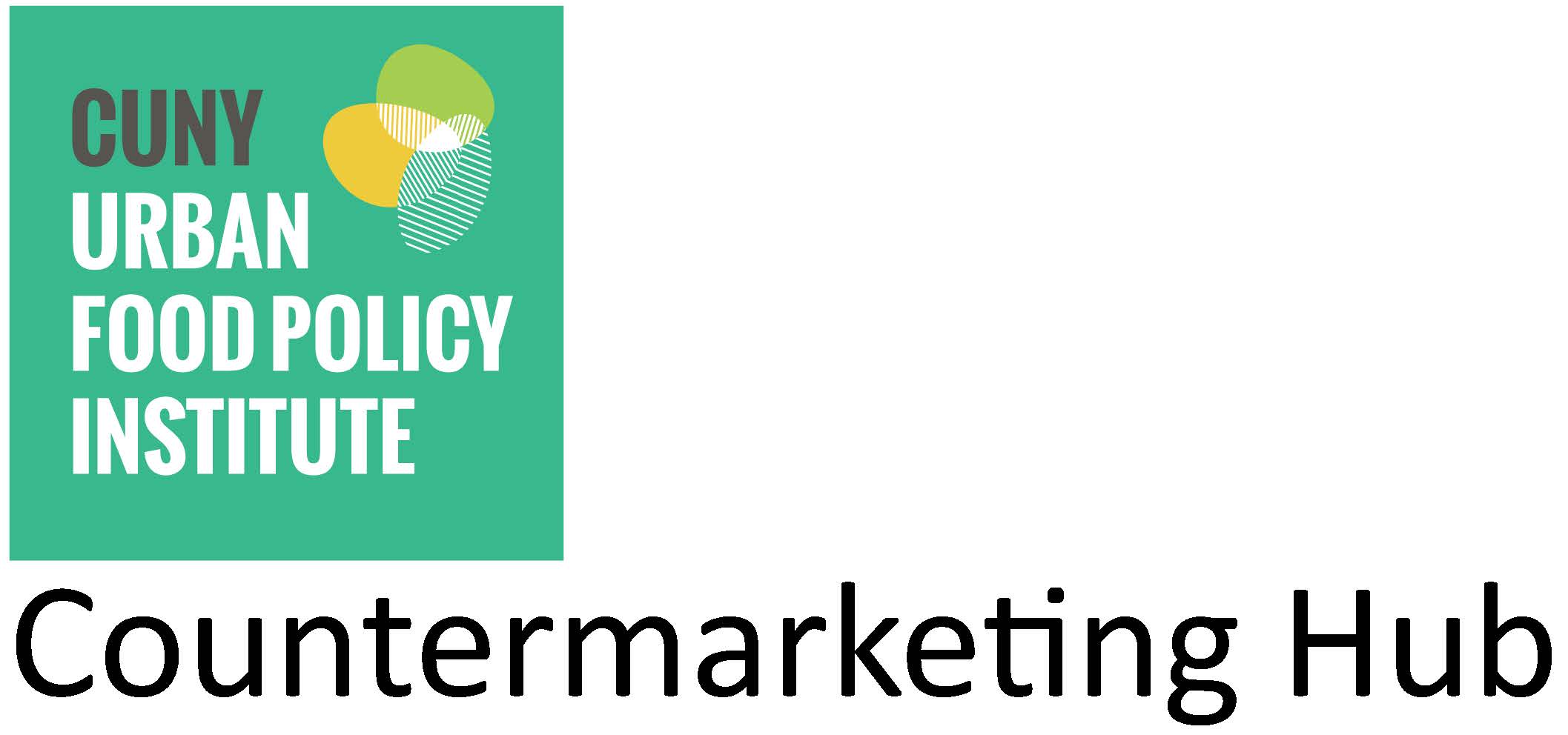Educational & Teaching Countermarketing Resources
CUNY Urban Food Policy Institute Resources
Youth Food Educators Toolkit
The Youth Food Educators (YOFE) Program Toolkit was created as a guide for organizations interested in engaging young people in advocacy, social justice, and countermarketing projects. In this toolkit the CUNY Urban Food Policy Institute shares insights, best practices, and lessons learned based on two years of experience with the YOFE program. The toolkit contains 10 workshops with learning objectives and activities, handouts, and evaluation materials, and provides guidance on launching youth-engaging countermarketing projects.
Countermarketing Staff Training Program
Presentation used for the Countermarketing Staff Training Program of the CUNY Urban Food Policy Institute. This presentation provides an overview of the marketing strategies big food companies use, targeted marketing, and discusses how countermarketing can be used as a tool to fight back against unhealthy marketing.
Youth food Countermarketing 101
Presentation developed by the CUNY Urban Food Policy Institute that can be used to teach youth about countermarketing and predatory marketing.
pOLICY BRIEF: COUNTERMARKETING UNHEALTHY fOOD
This policy brief by the CUNY Urban Food Policy Institute describes key elements of effective tobacco countermarketing campaigns and examines how these countermarketing strategies can be applied to countermarketing unhealthy foods and beverages.
External Resources
Food Marketing To Teens
UCONN Rudd center for Food policy & obesity
This video created by UCONN Rudd Center for Food Policy & Obesity shows how food and beverage companies market unhealthy products to youth in a variety of ways including through TV advertising, celebrity endorsements, social media, YouTube, and mobile apps. Find more information about Food Marketing to Teens here.
Junk Food Marketing to Children of Color: The Current Reality and What We Can Do About It
Berkeley media studies group
This PowerPoint slide deck created by Berkeley Media Studies Group outlines the current landscape of junk food and sugary drink targeted marketing, and can be used to communicate junk food and sugary drink marketing from a health equity point-of-view. Download the slide deck here.
Publications
A. Curtis. Eat this! How Fast Food Marketing Gets You to Buy Junk (and how to fight back). 2018.
Berkeley Media Studies Group. Annotated Bibliography on Targeted Marketing. March 2015.
Berkeley Media Studies Group. Health Equity & Junk Food Marketing: Talking About Targeting Kids of Color. 2017.
C. Bryan, D.S. Yeager, C.P. Hinojosa. A Values-alignment Intervention Protects Adolescents From the Effects of Food Marketing. Nature Human Behavior. April 2019.
C. Germond, A. Ramirez, and K.J. Gallion. Regulation of Food and Beverage Marketing to Latino Youths. Salud America!. August 2013.
J. Harris, W. Fraizer, F. Flemming-Milici, P. Hubert, G. Rodriguez-Arauz, et al. A Qualitative Assessment of US Black and Latino Adolescents’ Attitudes About Targeted Marking of Unhealthy Food and Beverages. Journal of Children and Media. April 2019.
J.L. Harris, C. Shenan, and R. Gross. Food Advertising Targeted to Hispanic and Black Youth: Contributing to Health Disparities. Rudd Center for Food Policy & Obesity. August 2015.
J.L. Harris, W. Frazier, S. Kumanayika, and A.G. Ramirez. Increasing disparities in unhealthy food advertising targeted to Hispanic and Black youth. Rudd Center for Food Policy & Obesity. January 2019.
P.C. Palmedo, L. Dorfman, S. Garza, E. Murphy, and N. Freudenberg. Countermarketing Alcohol and Unhealthy Food: An Effective Strategy for Preventing Noncommunicable Diseases? Lessons from Tobacco. Annual Review of Public Health 2017; 38: 119-144.
Pennington Biomedical Research Center. Policy Intervention Briefs : Nutrition Intervention: Junk Food Counter-Marketing.
S. Lucan, A. Maroko, O. Sanon, and C. Schechter. Unhealthful Food-and-Beverage Advertising in Subway Stations: Targeted Marketing, Vulnerable Groups, Dietary Intake, and Poor Health. Journal of Urban Health. April 2017. 94(2): 220-232.







